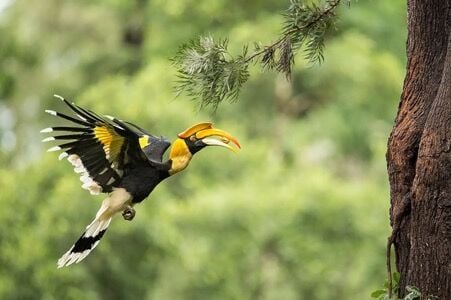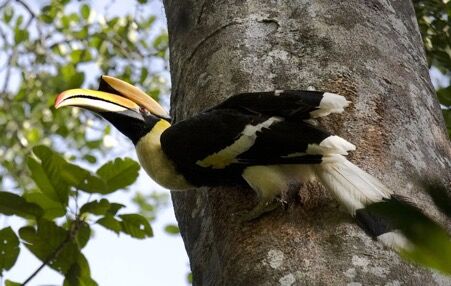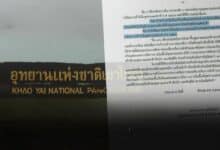Hornbills fly again over Lampang Chae Son

Absent from Thailand’s northern forests for more than 20 years, a pair of great hornbills have been released into Lampang Chae, Son National Park.
The release was described by the Zoological Park Organisation (ZPO) director Attaporn Srihayrun as only the first batch of birds that the organisation plans to return to the wild.
The ZPO first bred great hornbills in 2002.
The huge bird is found throughout Southeast Asia. They are social, living in groups of 2-40 individuals. Active during the day, they gather in large communal roosts on the highest branches at night.
They are loud and vocal, communicating with deep, hoarse grunts, roars, and barks.
The great hornbill is large, colourful and important in many tribal cultures and rituals. The bright yellow appearance of their primary feathers and the bill is caused by a stain from a preen gland secretion.

The underside of Its distinctive feature, the casque on top of its bill, appears yellow and red in females and yellow and black in males. The casque is hollow and serves no obvious purpose. Male hornbills are known, however, to headbutt each other in flight.
Females are smaller than males and have blue eyes, while males’ are red. Like other hornbills, they have prominent eyelashes, which are modified feathers.

Great hornbills will travel long distances to feed, and forage by clambering along branches or hopping, subsisting almost entirely on figs, so much so that up to 200 birds may gather in the same tree to feed. They are also partial to occasional insects, nestlings and lizards which, when caught, are tossed in the air and swallowed.
Great hornbills are excellent fliers and can be sometimes glimpsed flying at great heights over forests. Their wing beats are heavy, with fingers splayed and up-curled. The sound of their wings has been likened to the puffing of a steam locomotive starting up and can be heard from a distance.

Latest Thailand News
Follow The Thaiger on Google News:


























